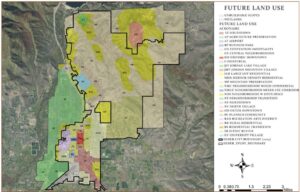Understanding the Difference Between IRR and NPV in Real Estate Investment
When evaluating real estate investments, two key financial metrics often come into play: Internal Rate of Return (IRR) and Net Present Value (NPV). Both provide valuable insights, but they serve different purposes and are calculated differently. Understanding these differences is crucial for making informed investment decisions.
What Is Net Present Value (NPV)?
NPV calculates the difference between the present value of cash inflows and outflows over a specified period. It answers the question: “What is the value of this investment in today’s dollars?”
How It’s Calculated:
A positive NPV indicates that the projected earnings (in present dollars) exceed the anticipated costs, suggesting a potentially profitable investment.
What Is Internal Rate of Return (IRR)?
IRR is the discount rate that makes the NPV of all cash flows from a particular project equal to zero. It represents the expected annual rate of return on an investment.
How It’s Calculated:
IRR is found by solving the equation:
This calculation often requires iterative methods or financial calculators, as it doesn’t have a straightforward algebraic solution.
Key Differences Between NPV and IRR
| Aspect | NPV | IRR |
|---|---|---|
| What It Measures | Dollar value added by the investment | Percentage return expected from the investment |
| Decision Rule | Accept if NPV > 0 | Accept if IRR > required rate of return |
| Assumptions | Assumes a fixed discount rate | Assumes reinvestment of interim cash flows at the IRR |
| Scale Sensitivity | Sensitive to the size of the project | Can be misleading for projects of different sizes |
| Reinvestment Rate | Assumes reinvestment at the discount rate | Assumes reinvestment at the IRR |
When to Use NPV vs. IRR
-
Use NPV when you want to know the absolute value an investment will add to your wealth. It’s particularly useful when comparing projects of different sizes or durations.
-
Use IRR when you want to understand the percentage return expected from an investment. It’s helpful for comparing the profitability of investments with similar scales.
Limitations of IRR and NPV
-
IRR can be misleading when comparing projects with different sizes, durations, or cash flow patterns. It also assumes that interim cash flows are reinvested at the IRR, which may not be realistic.
-
NPV provides a dollar value but doesn’t offer a percentage return, which can make it harder to compare projects of different sizes.
Conclusion
Both NPV and IRR are valuable tools in real estate investment analysis. NPV provides a clear picture of the value added by an investment, while IRR offers insight into the expected rate of return. Using both metrics in conjunction can provide a more comprehensive understanding of an investment’s potential.
References:











